
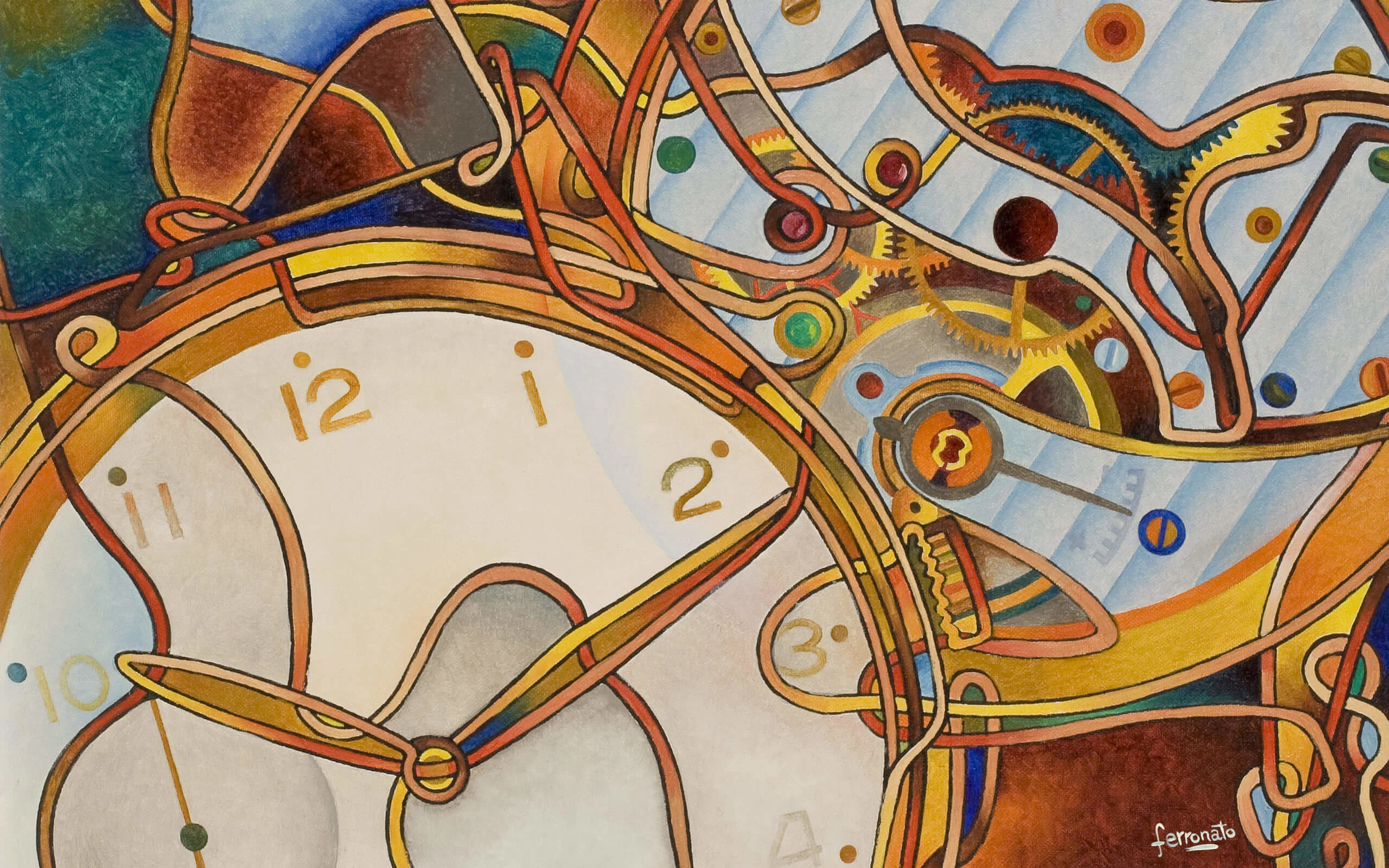
Argentinian painter Néstor Ferronato has worked in Italy since 1985 where he lives by puntualità svizzera or Swiss punctuality. Not only is he never late, he actually arrives well in advance of any appointments.
“My relationship with time is frantic — it’s never enough for me,” he says, “I wouldn’t waste it ever. If I could, I’d rather avoid sleeping, since we pass years doing that.”
Fascinated by the mechanisms of watches and clocks, Néstor started to make them his subjects. “I am obsessed with time passing by,” he says, “but I never desired to become a watchmaker. Maybe that was a mistake as I’d probably be more wealthy by now!”
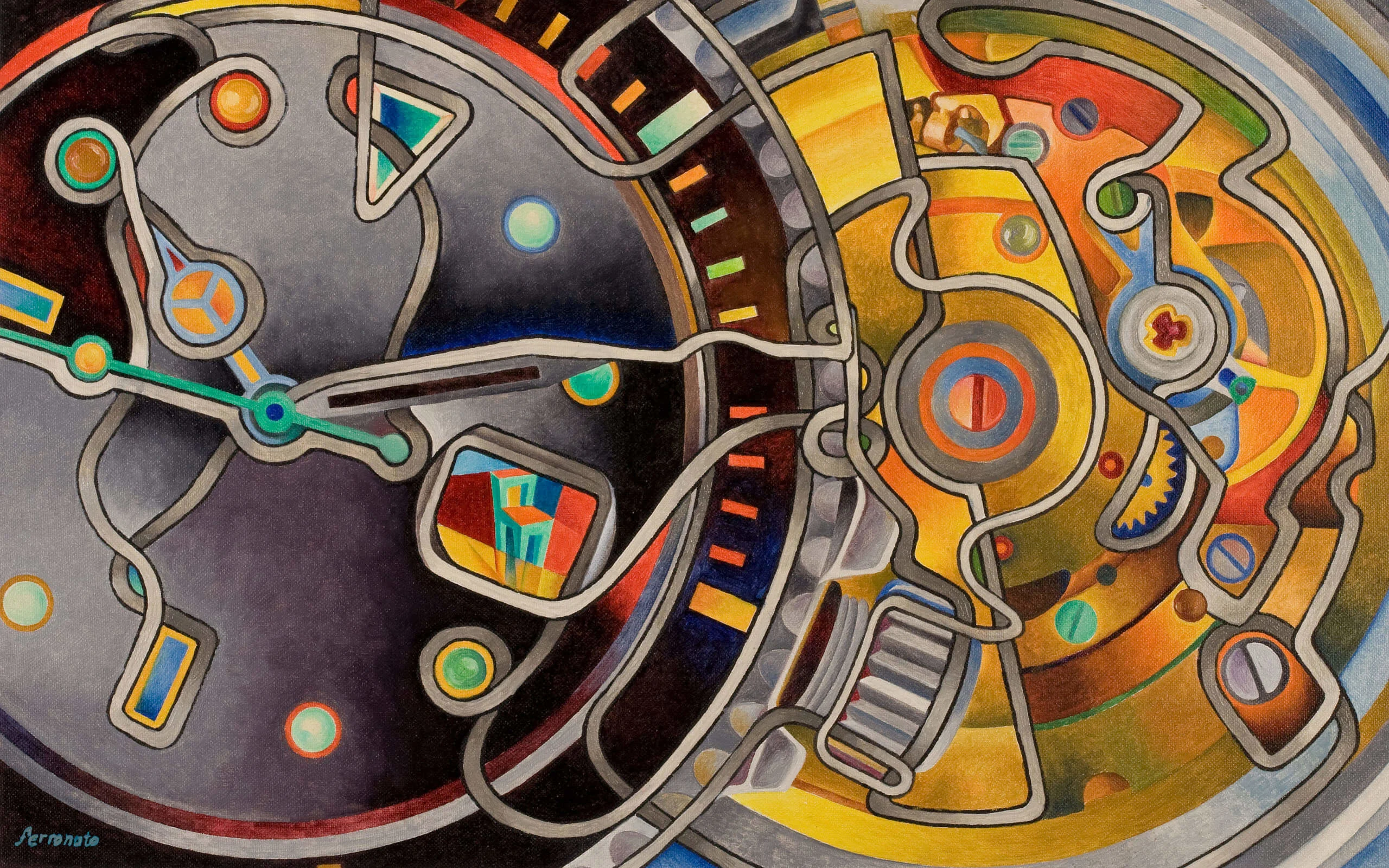
He’s been intrigued by the inner workings of things since he was small. As a boy he would take apart his toys — “I was trying to figure out what was making my tin-monkey move its arms and legs at the same time,” he says. “I wanted to understand why, pressing my toy car down while dragging it back, at my release it rushed forward like a rocket.”
One day his mother left a pocket watch within his reach. Opening it up to look inside, he discovered a whole world of components, of gears and screws. “I’d found a compendium of mysteries to be deciphered,” he remembers.
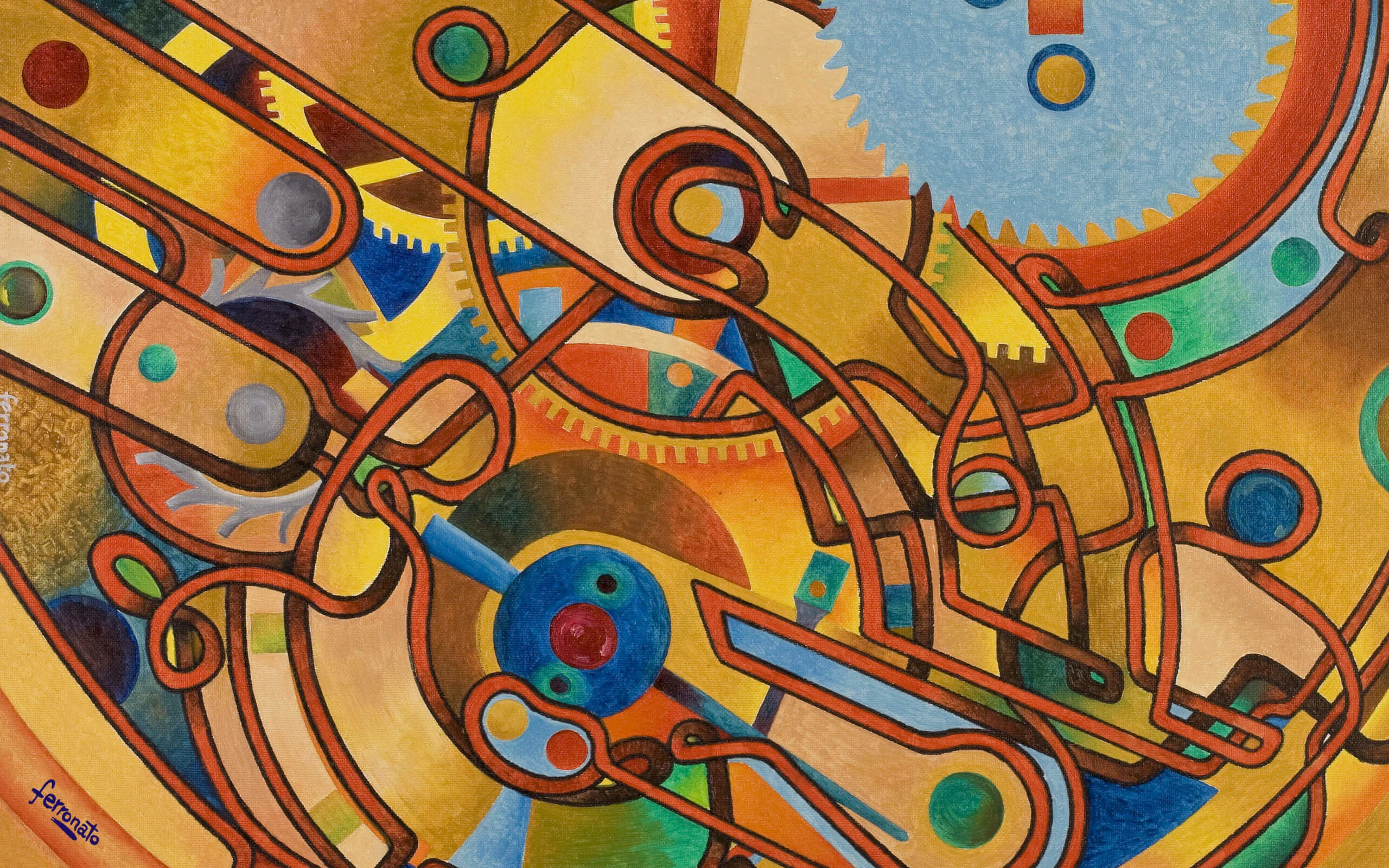
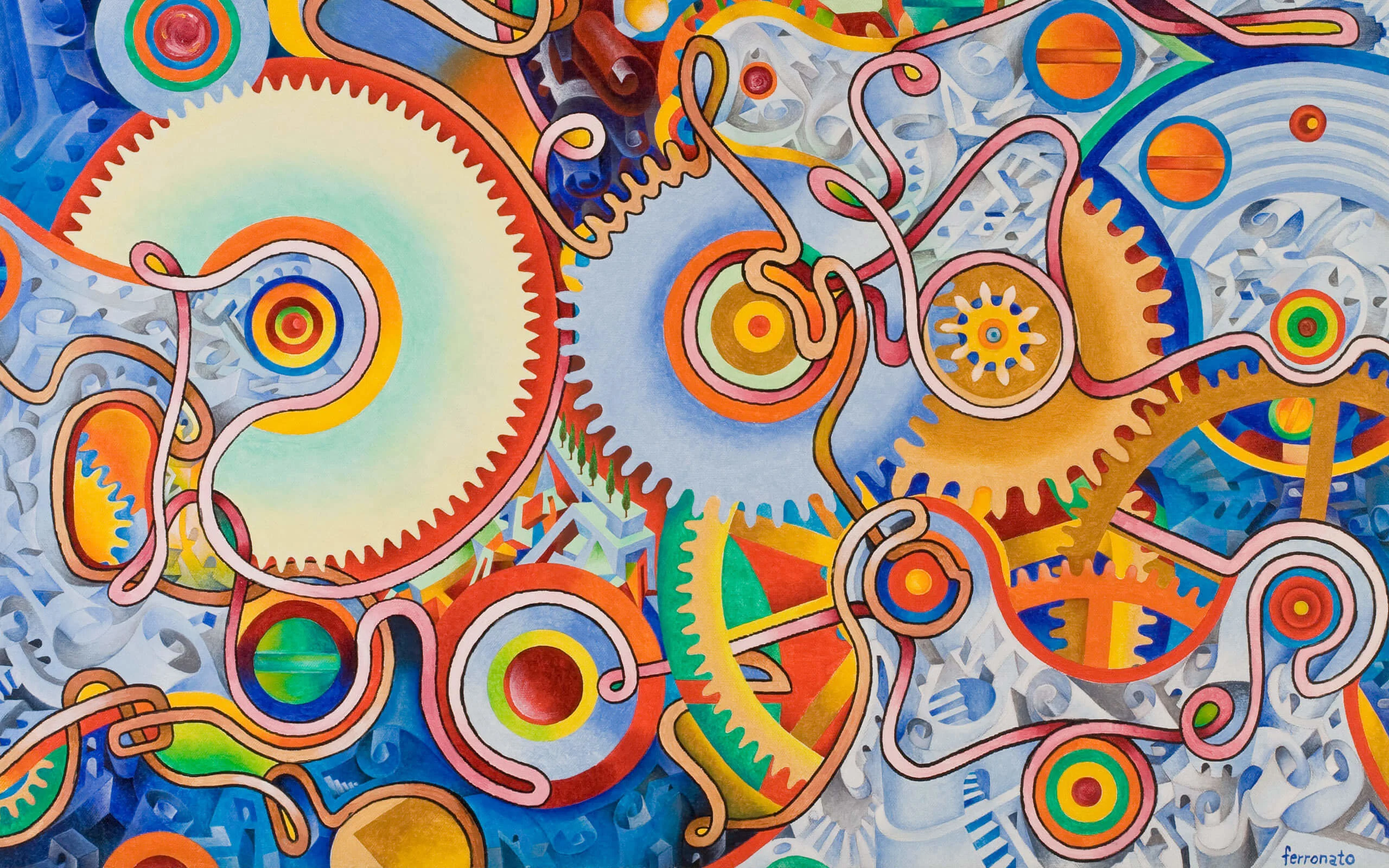
Trying to get at its insides, he also destroyed the first watch he ever owned — a first communion present from his parents. Today he only paints big brand watches which are far too expensive to open up.
“You simply cannot ruin a true masterpiece to make a painting that may never become one,” he says. Instead he studies technical drawings of their insides to paint them accurately. He follows specialized blogs to see when new models are released and consults old catalogues to pore over the illustrations of previous versions.

As he got older, he says that he started, “feeling the magic that timepieces emanate from their primordial purpose to measure something uncontrollable — time.”
He began painting looping ribbons moving in and out of the watch parts. The ribbons symbolize the dynamism of the mechanical movement of a watch, a visual metaphor for “the heart that makes the watch tick and the movements and complications that give it rhythm.”
Recently though Néstor has stopped using this technique so that other patterns in the watches can become more visible. In these “post-ribbons” as he calls them, Néstor hides people and objects within the watch workings for viewers to find. So in Prosit Breguet you can spot a glass of red wine held by a hand between the yellow gear on the right and the support plate where the logo is read. Above the wine glass two Breguet technicians look back at the viewer, keen to see how their craftsmanship is being appreciated.

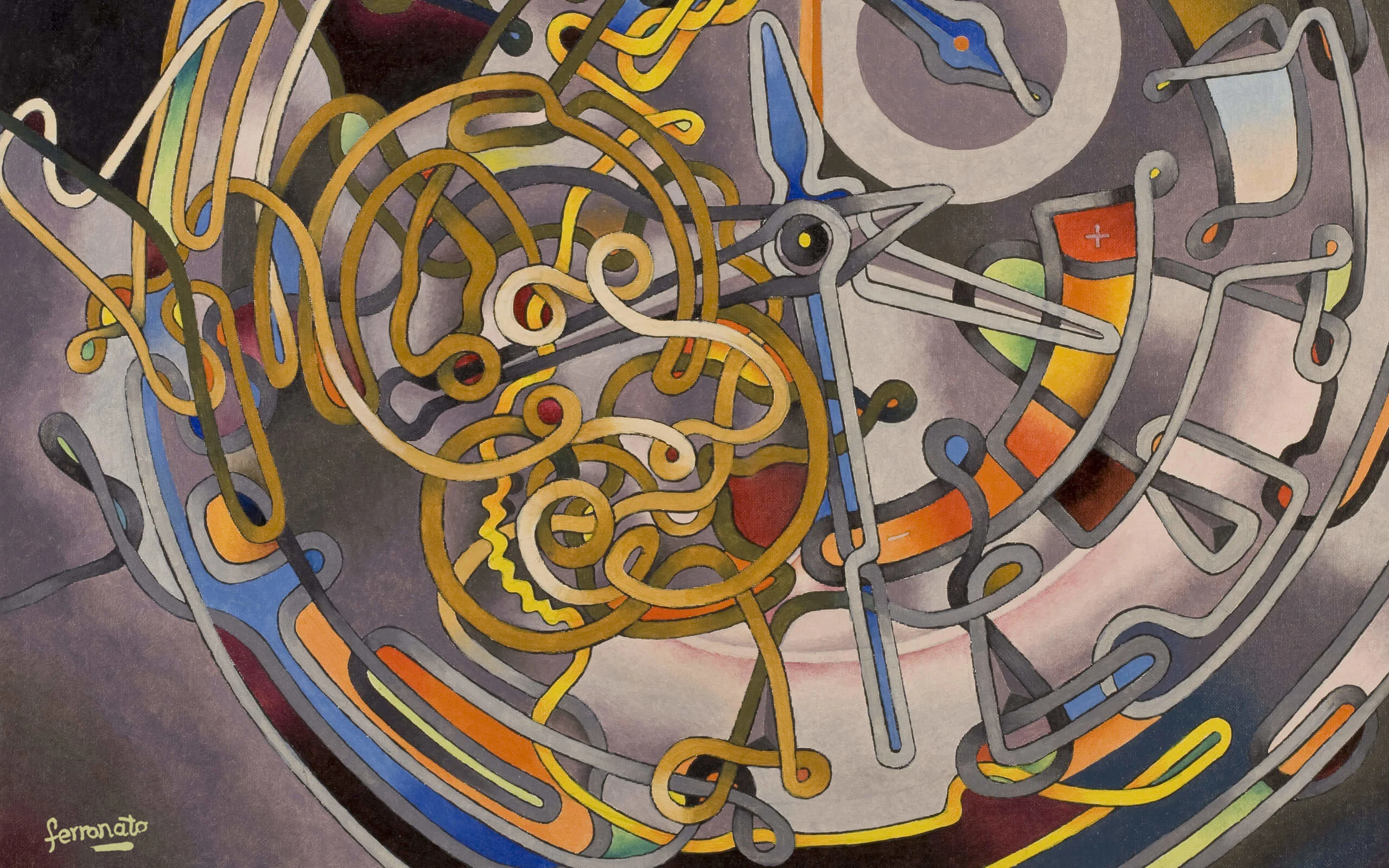
He delights in the relationship between art and time, the game of ideas as well as the visual effects. “What is a painting, abstract or figurative, if not a stop-frame of an instant?” he asks. He mentions Monet, who would paint the same subject at different times of the day to record the variations in color caused by the way the light changed. “When we talk about great artworks,” he says, “we talk about art that has exceeded its own time.
“We can say that watches are the hope and will of all that has yet to be done, but they’re also the certainty that there will never be enough time to do it. Like paintings — a whole life wouldn’t be enough for me to realize all the ideas that come into my mind.”


